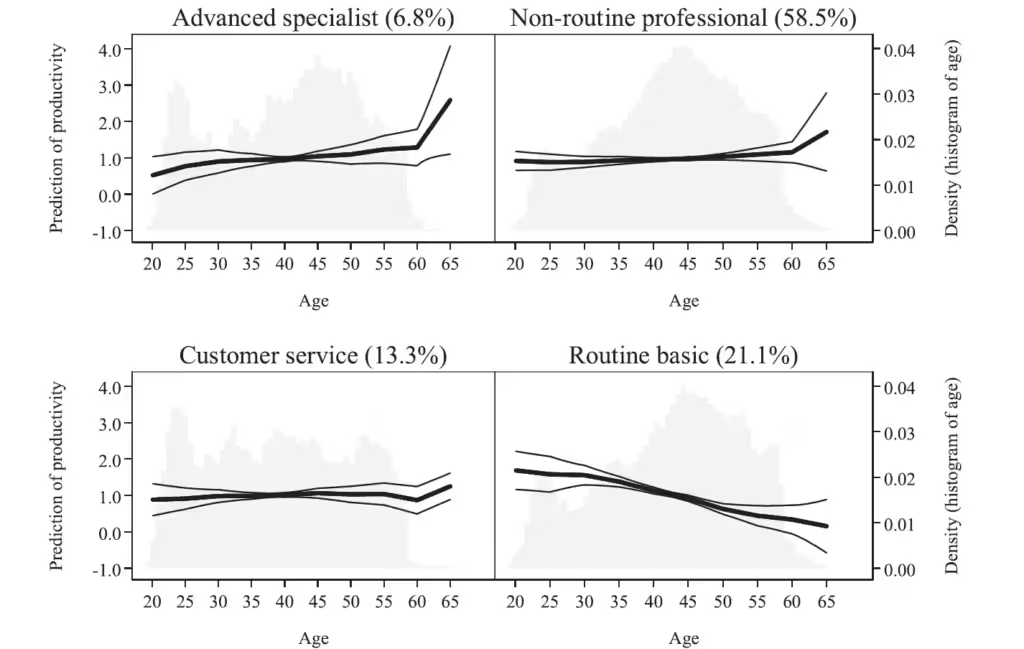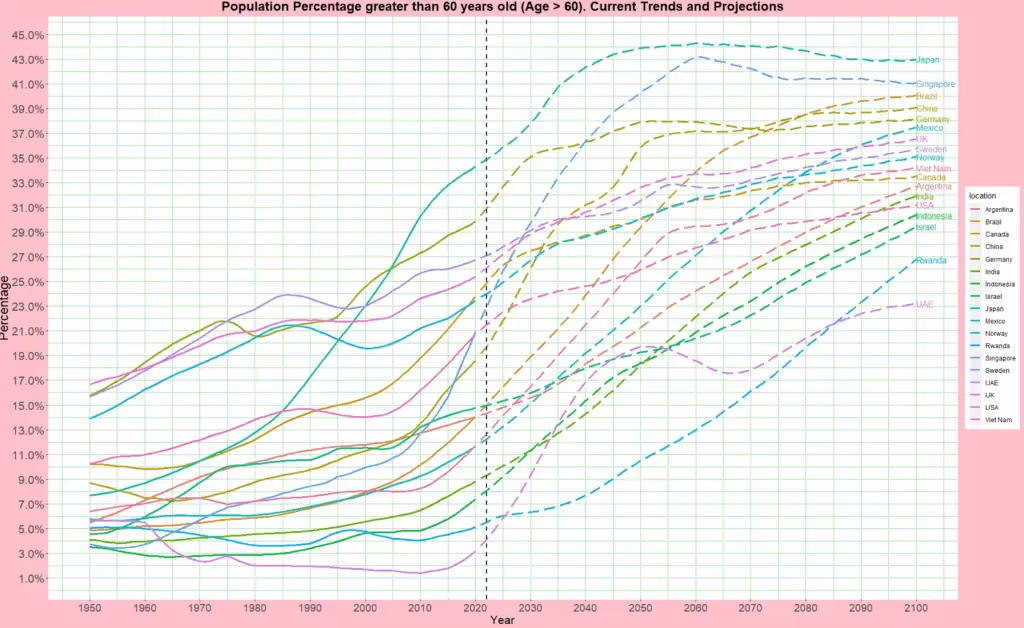Understanding the Workforce Ageing Problem in Global Talent Hubs
An essential element of a robust workforce planning strategy is concrete actions around ageing labor pools across the global talent hubs. The pandemic has created some gaps in thinking about the ageing impacts of labor. One critical study came out in 2021 that caught our attention. This study conducted a crucial experiment and extracted fascinating results
Börsch-Supan, Axel & Hunkler, Christian & Weiss, Matthias. (2021). Big Data at Work: Age and Labor Productivity in the Service Sector. The Journal of the Economics of Ageing. 19. 100319. 10.1016/j.jeoa.2021.100319.
The authors proved that productivity does not decline with age, and it improves with experience in professional jobs. It declines in certain routine task professions not much connected to the knowledge economy.

The world is in a complex scenario where we need the ageing talent to perform at optimal levels. Peter Drucker summarizes this nicely. “When work for most people meant manual labor, there was no need to worry about the second half of your life. You simply kept on doing what you had always done and spent the rest of your life doing nothing. Today, however, most of the work is knowledge work, and knowledge workers are not finished after 40 years of work; they are merely bored.”
We are not stating that we should have a labor strategy that considers the ageing population an integral element because it is good to do. The reality is we need this talent fully thriving in enterprises. Across all global talent locations, the ageing population is a concern. The following plot shows how the ageing population is expected to trend (population > 60 as a percentage of population)

Why should Recruiters and Workforce Planners pay attention to this?
As part of writing this email, I spoke to a few experienced developers who are elderly. I asked them what separates them from early-career talent companies always seem to go after. Here are the top few responses
- Differentiating stakeholder needs and wants (essential in managing scope creep)
- Knowing when to say No
- Establishing key development processes and not operating random
- Writing code that brings 10X impact rather than taking shortcuts
Now, this shows this is a unique talent pool that can not only solve for short term needs but also optimize from the long run
RECRUITERS
Sentiment Analysis: In order to successfully hire this talent. Recruiters need to understand Sentiment Analysis by Generations as the expectations are different.
Connect with Existing Leaders: During the interview process, if Recruiters can connect the candidates with existing leaders in the organization, it may prove beneficial
Understanding the History of Digital Technology: Some of them may have started when there was no clear difference between Frontend, Backend, Database, etc. But that does not mean they are not good at them. So doing a bit more homework on their background will inspire them to join the enterprise.
Establishing and specializing this channel may mean significant benefit to your enterprise.
WORKFORCE PLANNERS
Country Dynamics: Each country’s ageing journey differs (as shown in the graph above). Migration also plays an effect in this. For example, according to a report published by the Bertelsmann Foundation, Germany would need to bring in at least 0.26 million labor migrants from abroad each year until 2060 to make up for the labor shortage caused by its declining population. Of these 0.26 million migrants per year, around 0.15 million may need to be brought in from non-EU countries.
Reimagine talent: It takes years to train specific job roles like Underwriters (as an example). So we have to develop models where access to retired talent is established and contributes as an SME in critical areas. This Portfolio approach will provide workforce planners with a new way to scale the supply-demand gap
Reskilling Plan: Workforce planners should work with L&D leaders to develop comprehensive reskilling plans on newly required job functions. The following are potential areas to target (to name a few)
- Robotic process automation
- ESG related job roles
- Agile Coaches
An experienced talent pool can do magic to your enterprise. What do Steve Jobs, Jeff Bezos, Larry Page, Sergey Brin, and several other founders have in common? All have been carefully coached by Bill Campbell, the CEO whisperer. Bill Campbell worked tirelessly, and he was the Trillion dollar coach and also played the role of CEO at Intuit. Age was just a number for Bill Campbell, and he often equated that to wisdom gained
All of us can take inspiration from Bill Campbell in our labor strategies.










.svg)




















.svg)





.svg)
